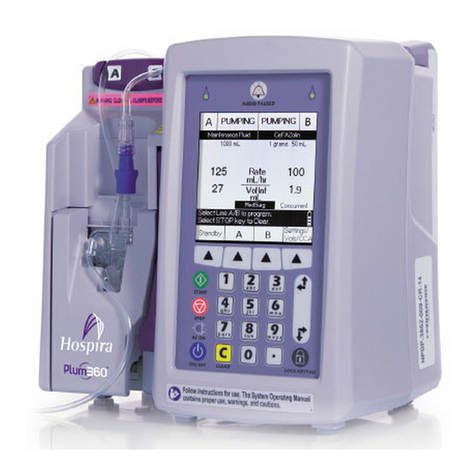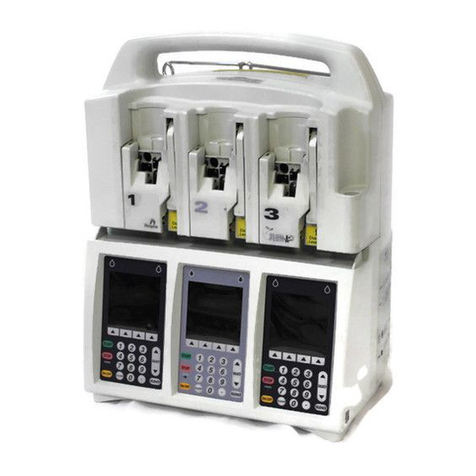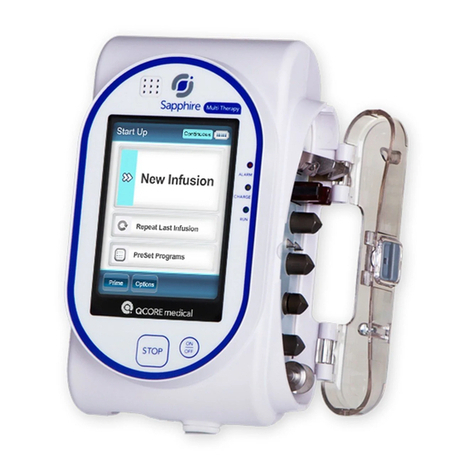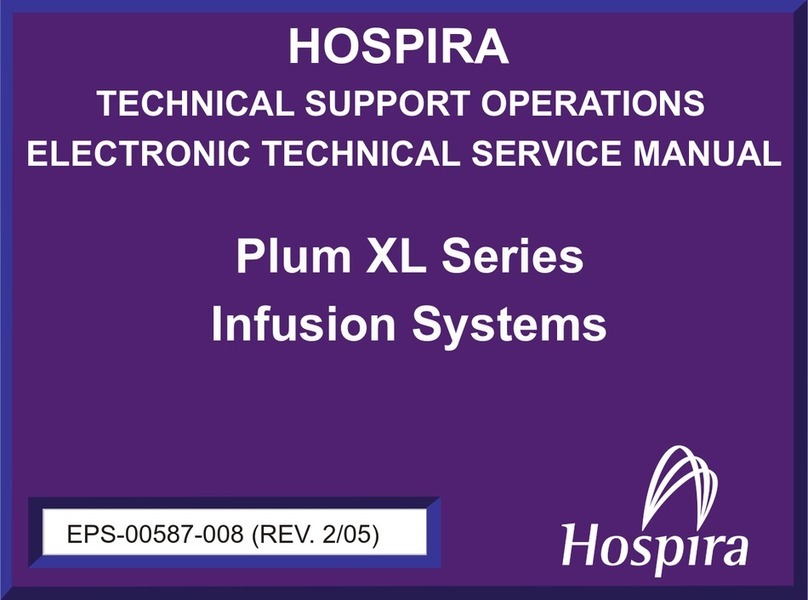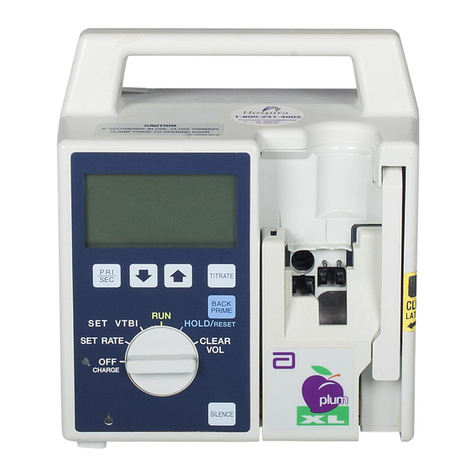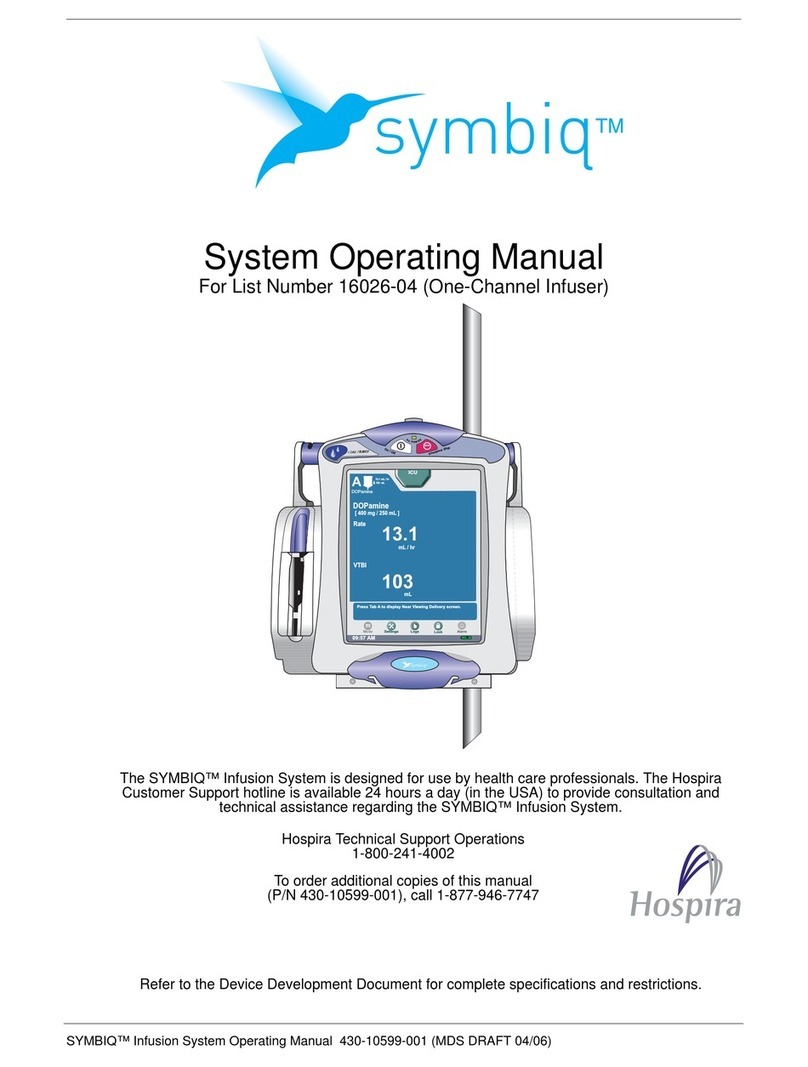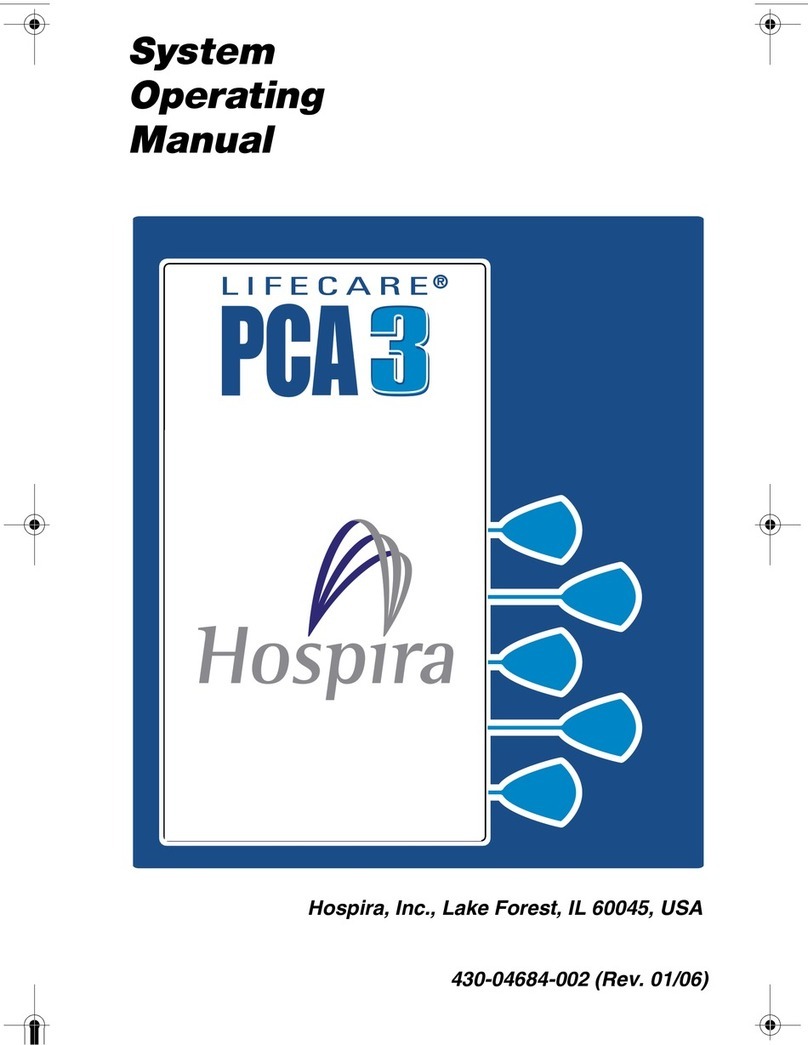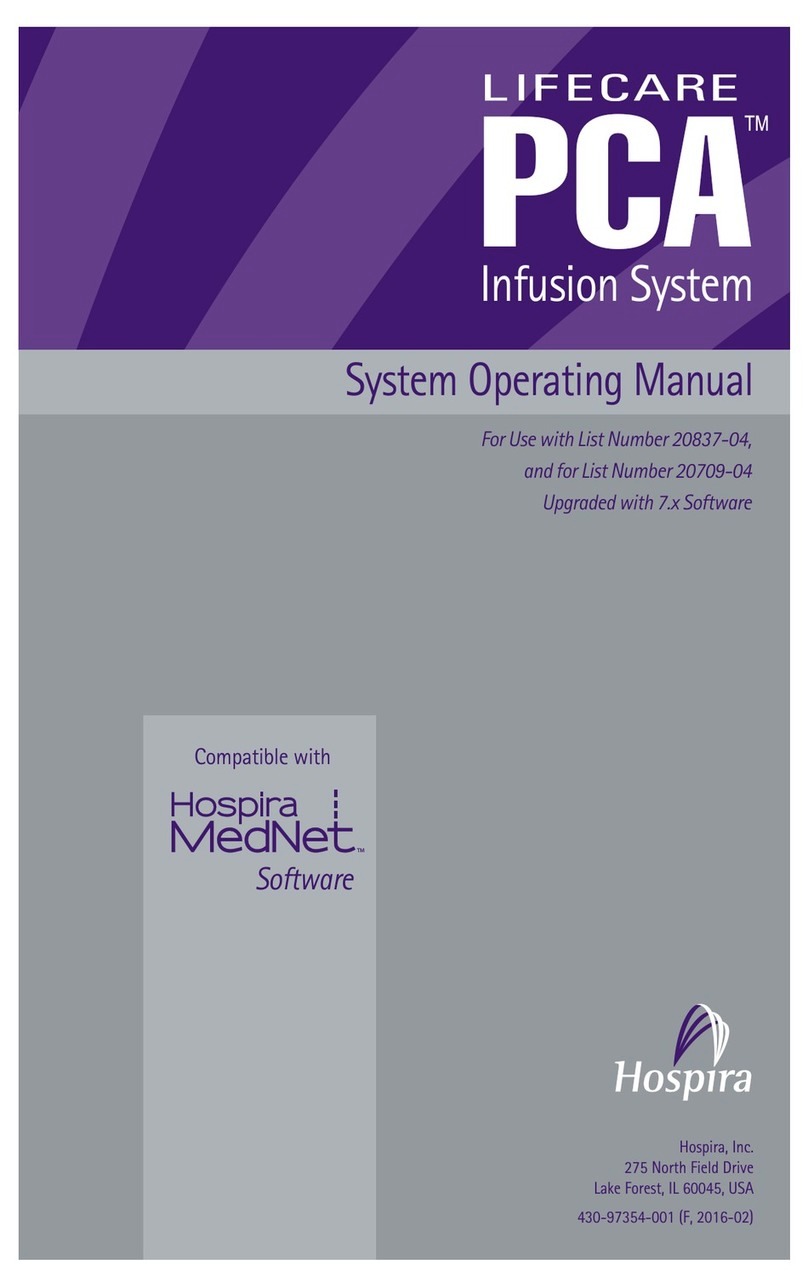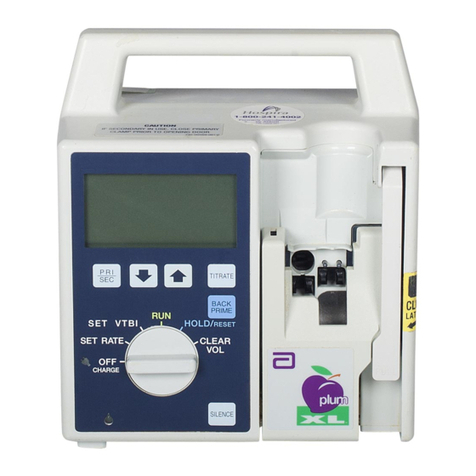
For Systems With Hospira MedNetTM Software
iii 430-95597-001 (Rev. 06/05)
REAR CASE CONTROLS . . . . . . . . . . . . . . . . . . . . . . . . . . . . . . . 3-6
ADMINISTRATION SETS . . . . . . . . . . . . . . . . . . . . . . . . . . . . . . . 3-7
PREPARING THE ADMINISTRATION SET . . . . . . . . . . . . . . . . . . . . 3-7
PRIMING THE ADMINISTRATION SET . . . . . . . . . . . . . . . . . . . . . . 3-8
LOADING THE CASSETTE . . . . . . . . . . . . . . . . . . . . . . . . . . . . . . 3-9
PREPARING THE SECONDARY LINE . . . . . . . . . . . . . . . . . . . . . 3-10
DISCONTINUING ELECTRONIC FLOW
CONTROL & SETTING GRAVITY FLOW . . . . . . . . . . . . . . . . . . . 3-11
DISCONTINUING FLUID ADMINISTRATION . . . . . . . . . . . . . . . . . . 3-12
Section 4, Basic Operation . . . . . . . . . . . . . . . . . . . . .4-1
GETTING STARTED . . . . . . . . . . . . . . . . . . . . . . . . . . . . . . . . . . 4-1
unpacking . . . . . . . . . . . . . . . . . . . . . . . . . . . . . . . . . . . . . 4-1
tandem carrier instructions . . . . . . . . . . . . . . . . . . . . . . . . 4-2
system self-tests . . . . . . . . . . . . . . . . . . . . . . . . . . . . . . . . 4-2
data retention . . . . . . . . . . . . . . . . . . . . . . . . . . . . . . . . . . 4-3
POWER ON. . . . . . . . . . . . . . . . . . . . . . . . . . . . . . . . . . . . . . . . 4-4
SIMPLE DELIVERY . . . . . . . . . . . . . . . . . . . . . . . . . . . . . . . . . . . 4-6
TITRATION . . . . . . . . . . . . . . . . . . . . . . . . . . . . . . . . . . . . . . . . 4-8
PIGGYBACK DELIVERY . . . . . . . . . . . . . . . . . . . . . . . . . . . . . . . 4-12
CONCURRENT DELIVERY . . . . . . . . . . . . . . . . . . . . . . . . . . . . . 4-15
STOP AND START WITH ONLY 1 LINE PUMPING . . . . . . . . . . . . . 4-18
STOP AND START WITH BOTH LINES PUMPING . . . . . . . . . . . . . 4-19
BACKPRIMING . . . . . . . . . . . . . . . . . . . . . . . . . . . . . . . . . . . . . 4-20
CLEARING SETTINGS . . . . . . . . . . . . . . . . . . . . . . . . . . . . . . . . 4-21
UPDATING DRUG LIBRARY . . . . . . . . . . . . . . . . . . . . . . . . . . . . 4-23
Section 5, Advanced Programs . . . . . . . . . . . . . . . . . .5-1
DOSE CALC (MCG/KG/MIN ON A) . . . . . . . . . . . . . . . . . . . . . . . . 5-2
DOSE CALC (MG/MIN ON B) . . . . . . . . . . . . . . . . . . . . . . . . . . . . 5-9
LOADING DOSE . . . . . . . . . . . . . . . . . . . . . . . . . . . . . . . . . . . . 5-15
MULTISTEP PROGRAMMING . . . . . . . . . . . . . . . . . . . . . . . . . . . 5-22
Section 6, Additional Features . . . . . . . . . . . . . . . . . . .6-1
SIMPLE DELIVERY USING DELAYED START . . . . . . . . . . . . . . . . . 6-1
PIGGYBACK WITH NURSE CALLBACK . . . . . . . . . . . . . . . . . . . . . 6-2
POSSIBLE NON-DELIVERY PROGRAMMED . . . . . . . . . . . . . . . . . . 6-4
USING THE STANDBY FEATURE . . . . . . . . . . . . . . . . . . . . . . . . . 6-4
SELECT OPTION- VOLUMES INFUSED, PRESSURE/POST INFUSION
430-95520-001TOC.fm Page iii Wednesday, June 8, 2005 8:13 AM

